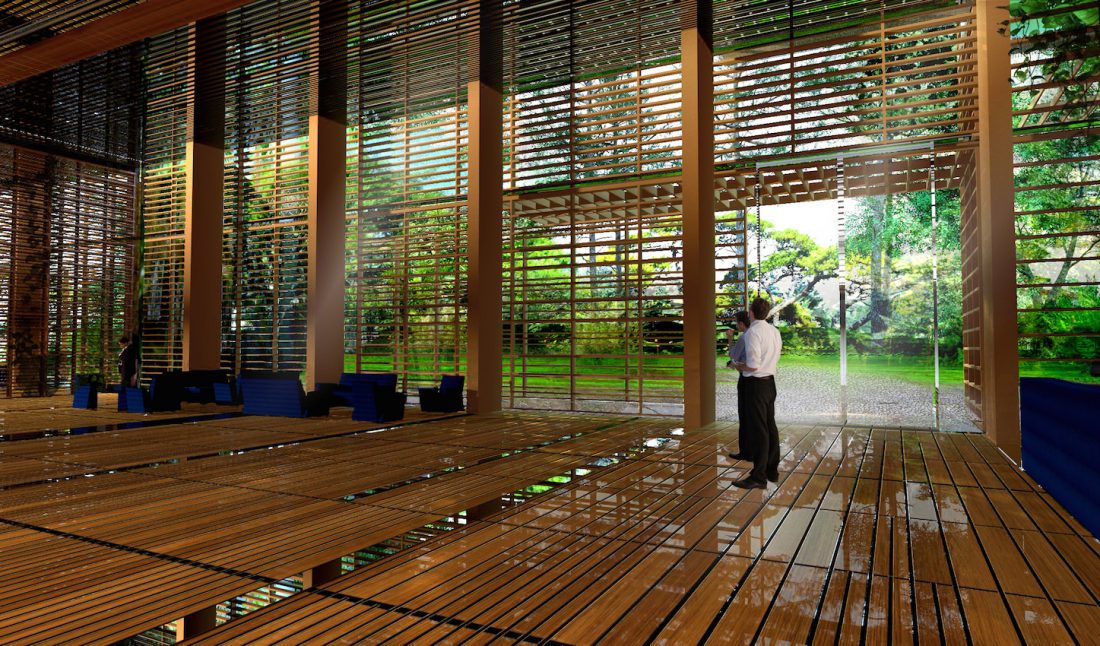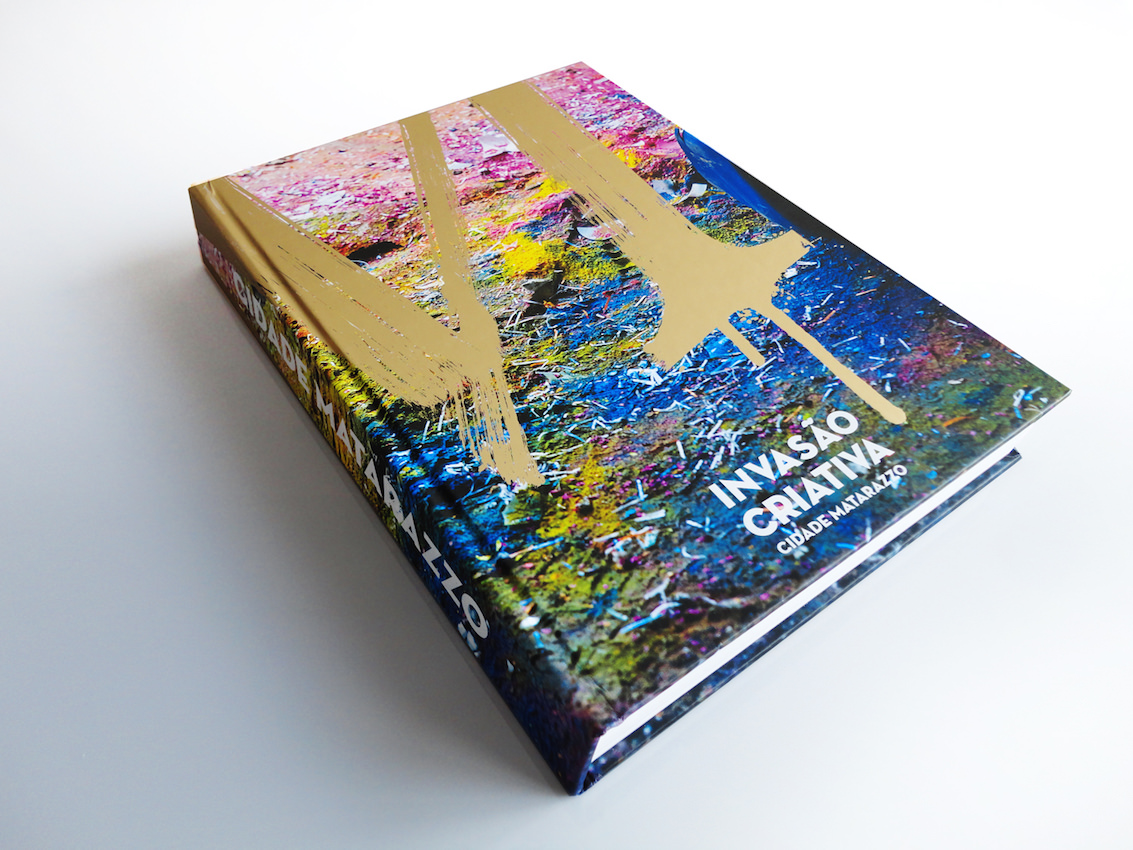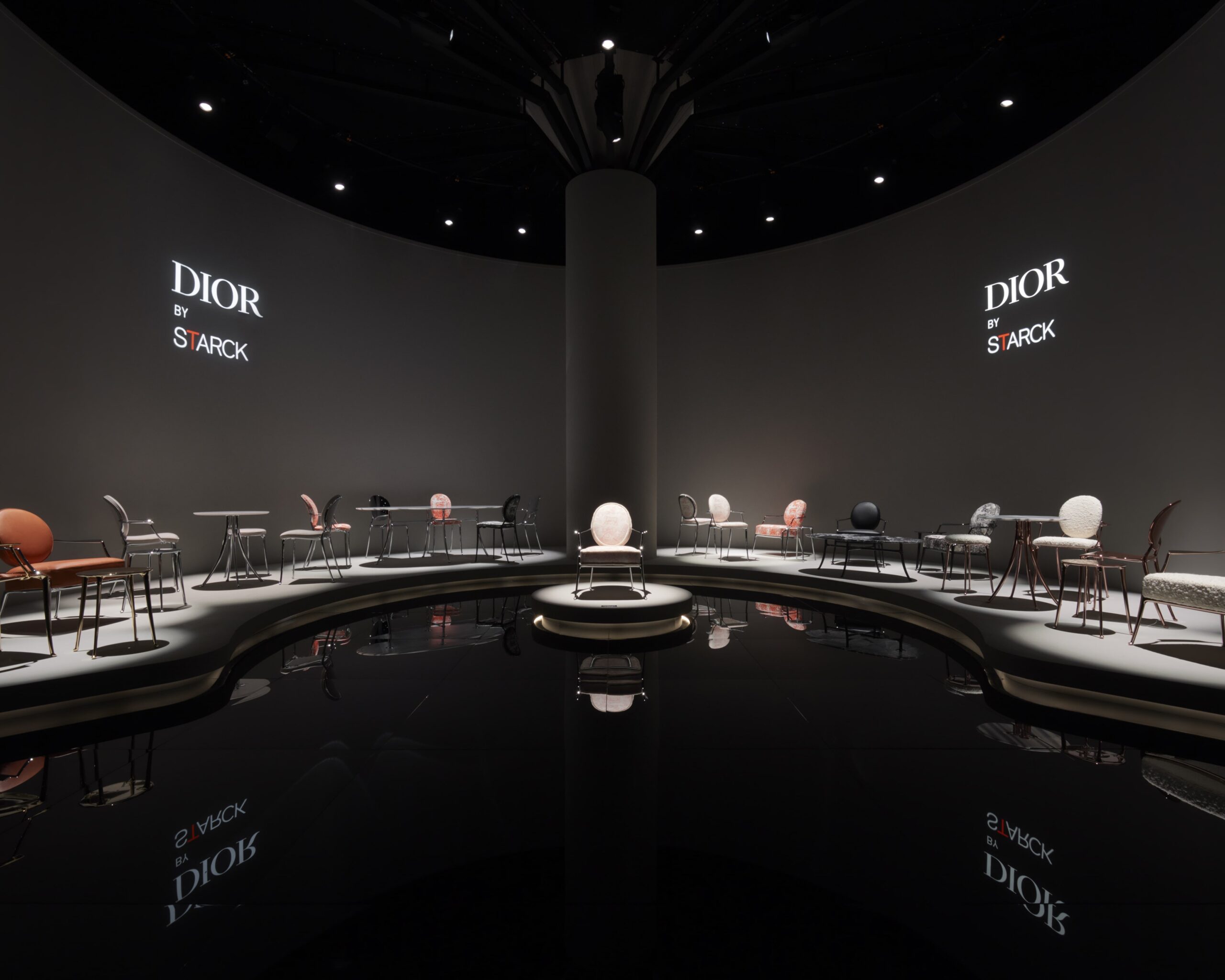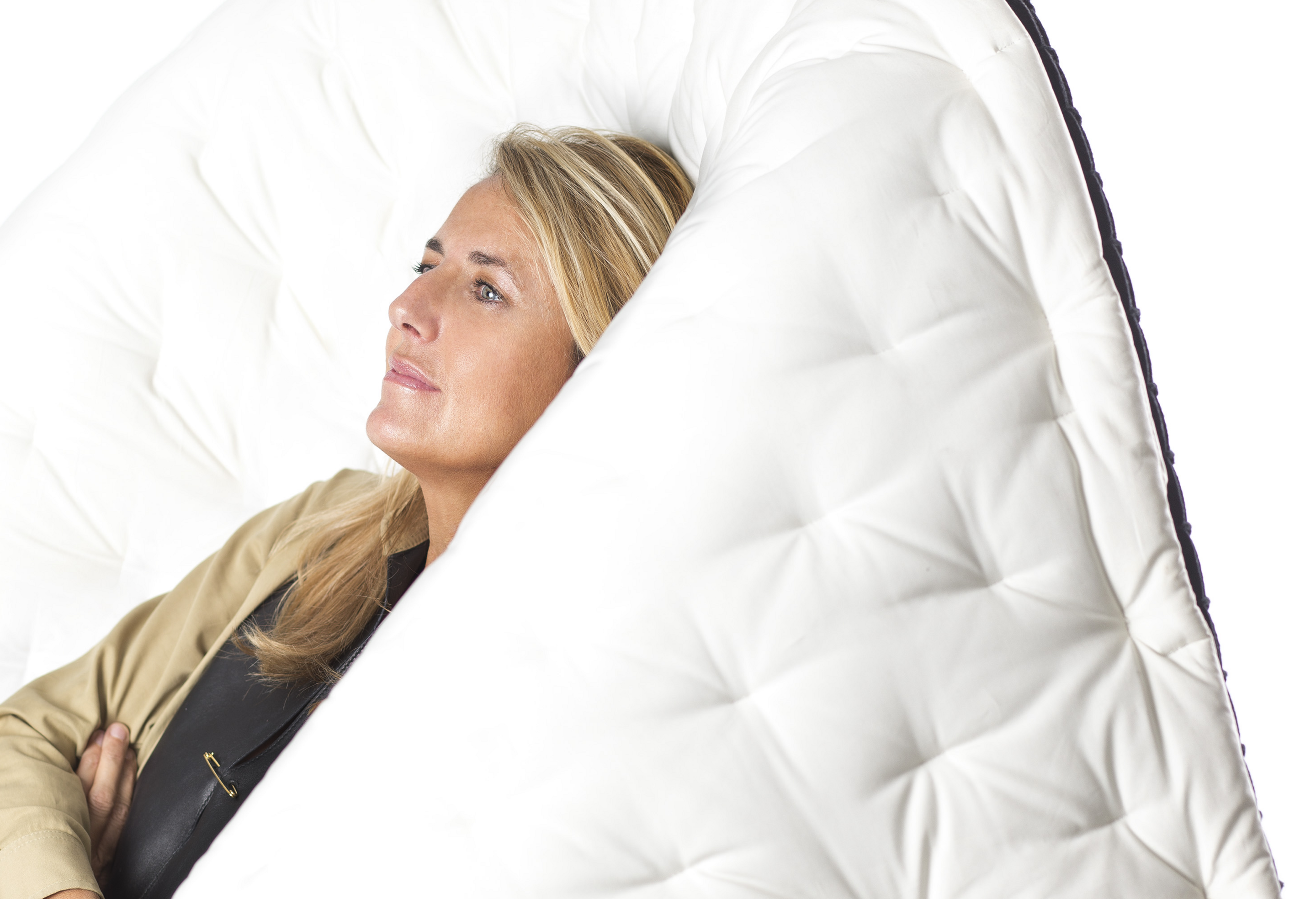Paulista Avenue took me by surprise. It was a hot and humid August day, the beginning of Brazil’s winter. The epicenter of São Paulo, Paulista Avenue was full of life: tourists enjoying a stroll in a nearby park or visiting museums, local “Paulistas” rushing in and out of office buildings, homeless people waking up from a late afternoon nap, and the famous São Paulo city’s traffic that everyone keeps complaining about. A charming chaos.
I turned right from the noisy avenue into the site of Cidade Matarazzo, the former hospital Umberto Primeiro in São Paulo. and within less than a minute found myself exploring dusty delivery and surgery rooms that time had left untouched, where old medicine bottles with Italian handwriting scrawled across them were remnants of an era when São Paulo attracted large numbers of Italian immigrants, brought to the country to harvest coffee.
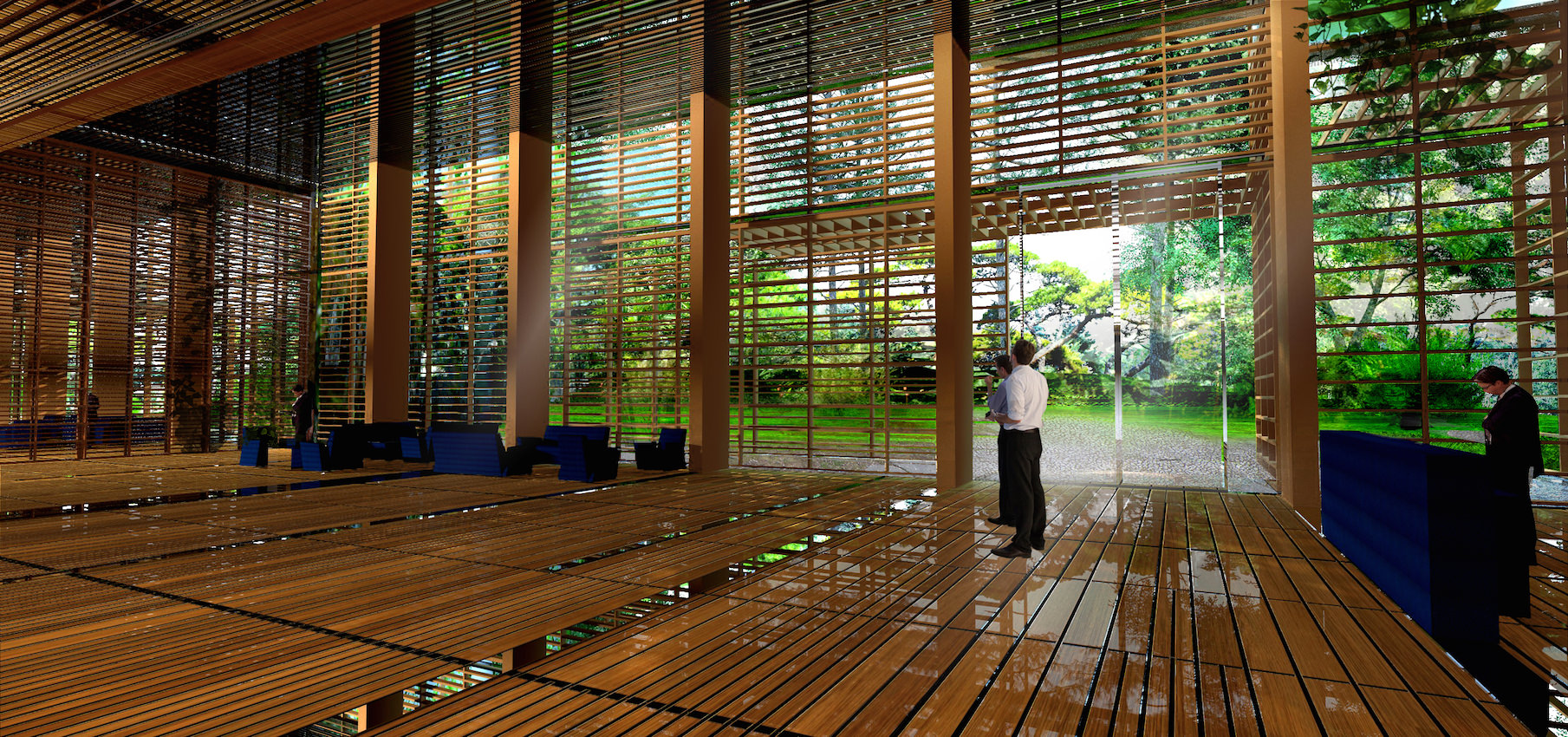 The Rosewood Tower by Jean Nouvel.
The Rosewood Tower by Jean Nouvel.
“It used to be a hospital for the Italian community who came to Brazil in the 19th century,” said Elise Lombrage, the communications director of the Matarazzo project owned by Groupe Allard, as she walked me through the deserted hospital. Lombrage’s eyes lit up as she described how the abandoned hospital will be transformed into “a stylish development that will include a hotel, entertainment services, and cultural venues like no other.”
For now, the site is surrounded by rainforest plants, enveloping the space with a jungle-like artsy vibe. These are the remains of “Made by . . . Feito por Brasileiros,” a “creative invasion” of more than 100 artists who brought the hospital, which was abandoned in 1993, back to life in September 2014. “Feito por Brasileiros” was named the best culture event of 2014 by the São Paulo Association of Art Critics, APCA.
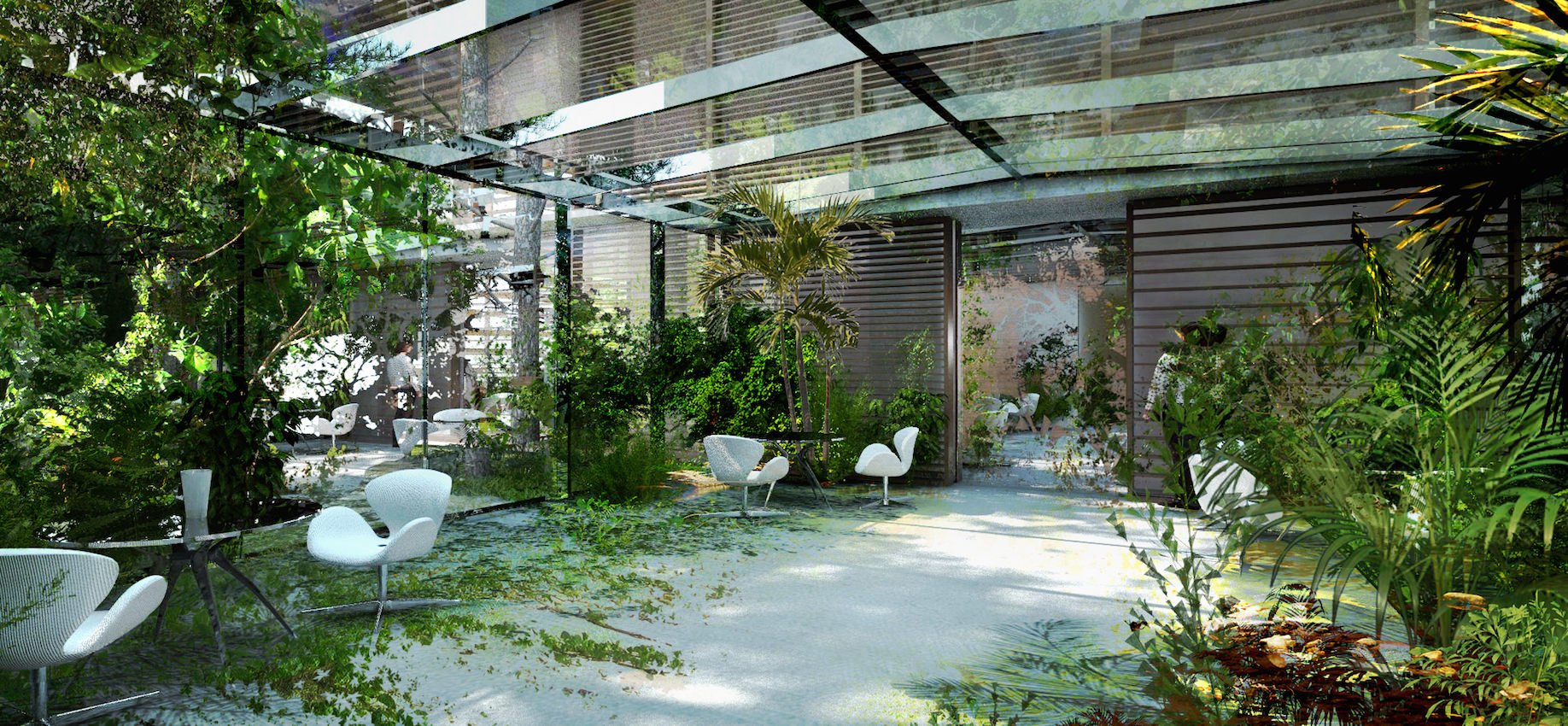 The Rosewood Tower by Jean Nouvel.
The Rosewood Tower by Jean Nouvel.
The visionary behind this transformation is Alexandre Allard. He is also the founder of the Matarazzo project and Groupe Allard, which enjoys the backing of star-studded, award-winning talent, such as the highly sought-after designer Philippe Starck, who will work on the the interior design, and Jean Nouvel who will design The Rosewood Tower.
I climbed a spiral staircase to meet Allard, 47, who greeted me from beyond his large, messy desk. We dove straight into a two-hour-long conversation about business, passion, and life philosophy.
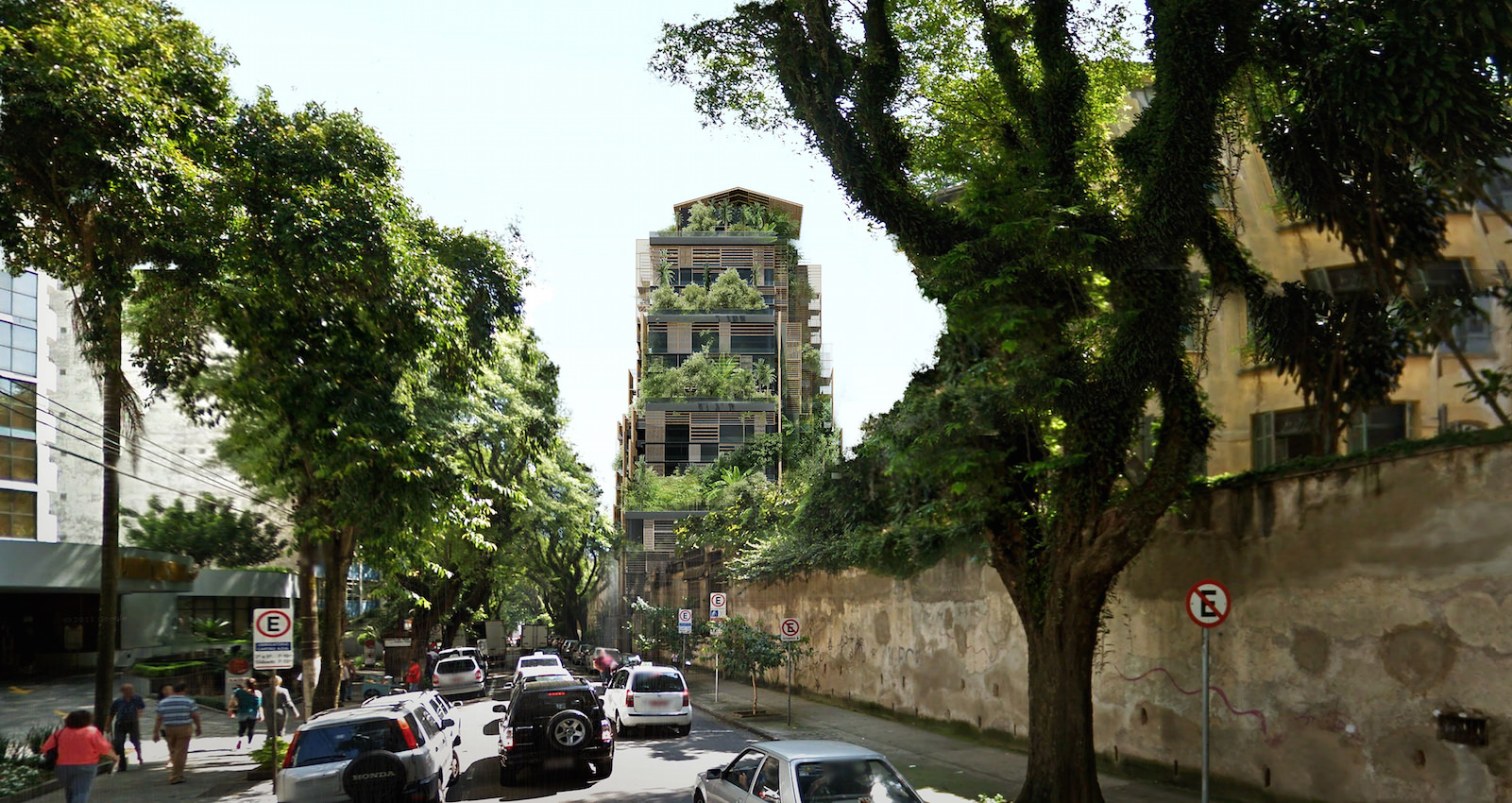 The Rosewood Tower by Jean Nouvel.
The Rosewood Tower by Jean Nouvel.
WHITEWALL: Where did it all start?
ALEXANDRE ALLARD: I was one year old when my parents decided to move to Africa. I grew up in Abidjan, the economic capital of the Ivory Coast. I was 15 when I moved to Saint Martin de France, a boarding school in France. I convinced five of my friends to come with me. The school was very expensive for my parents, who ended up saving most of their income to allow me to study there . . . It was hard for me because I realized I didn’t really know how to speak French; I couldn’t express myself. I suddenly discovered a world outside of Africa. Suddenly, people made fun of my African accent and the way I dressed.
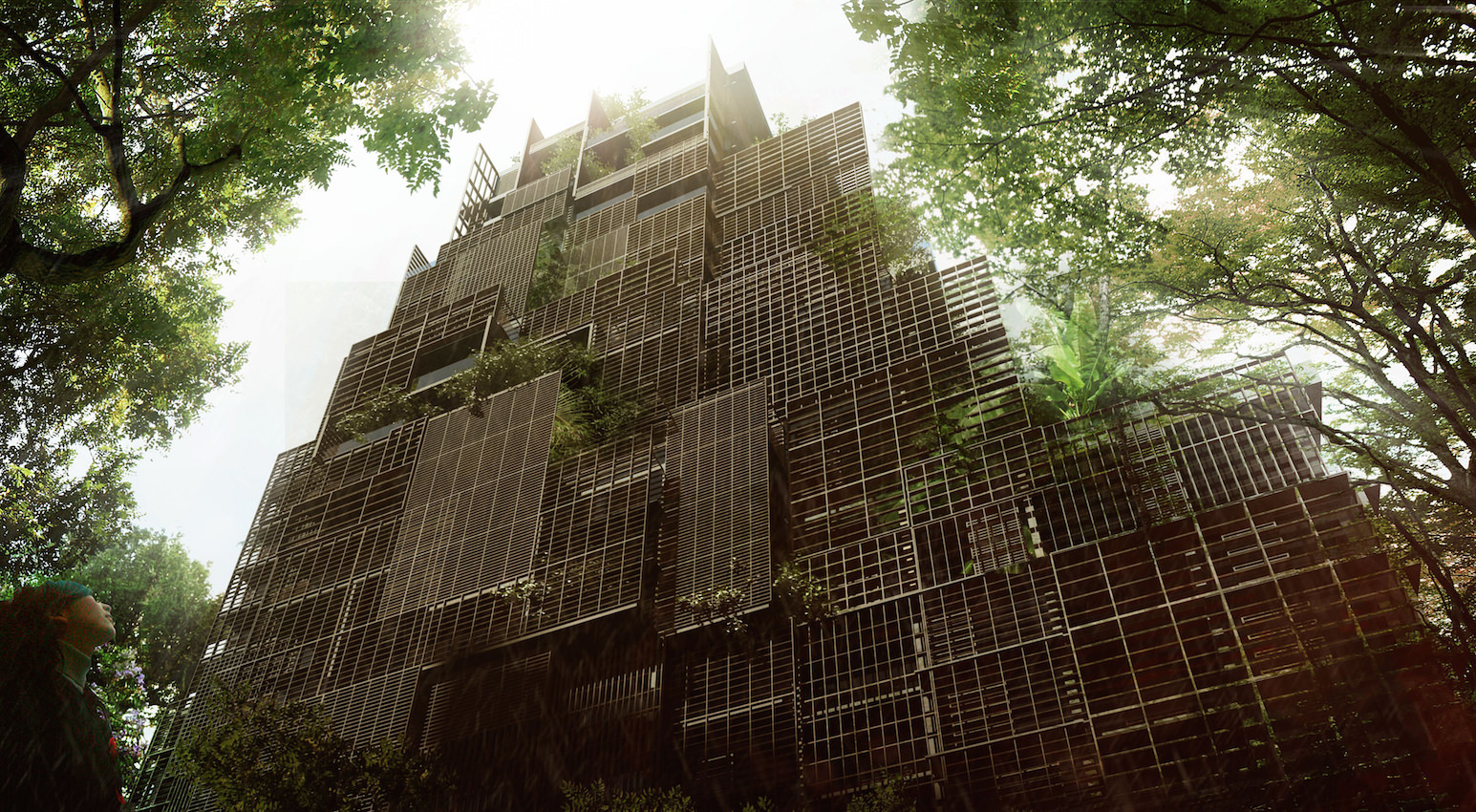 The Rosewood Tower by Jean Nouvel.
The Rosewood Tower by Jean Nouvel.
WW: Did it bother you?
AA: Not at all! For me it was a very defining time in my life. I had to work on my French, and in essence to survive. I learned that humans can adapt to every condition and environment. When I came to Saint Martin de France, I met a lot of rich children. The way they saw me gave me energy. I needed more money to buy better clothes, so I started selling ties to the children in the school. We were forbidden from going anywhere without a tie, and out of the 1,000 children in the school that left for the weekend, an average of 20 forgot to bring their ties when they returned. So I sold them ties.
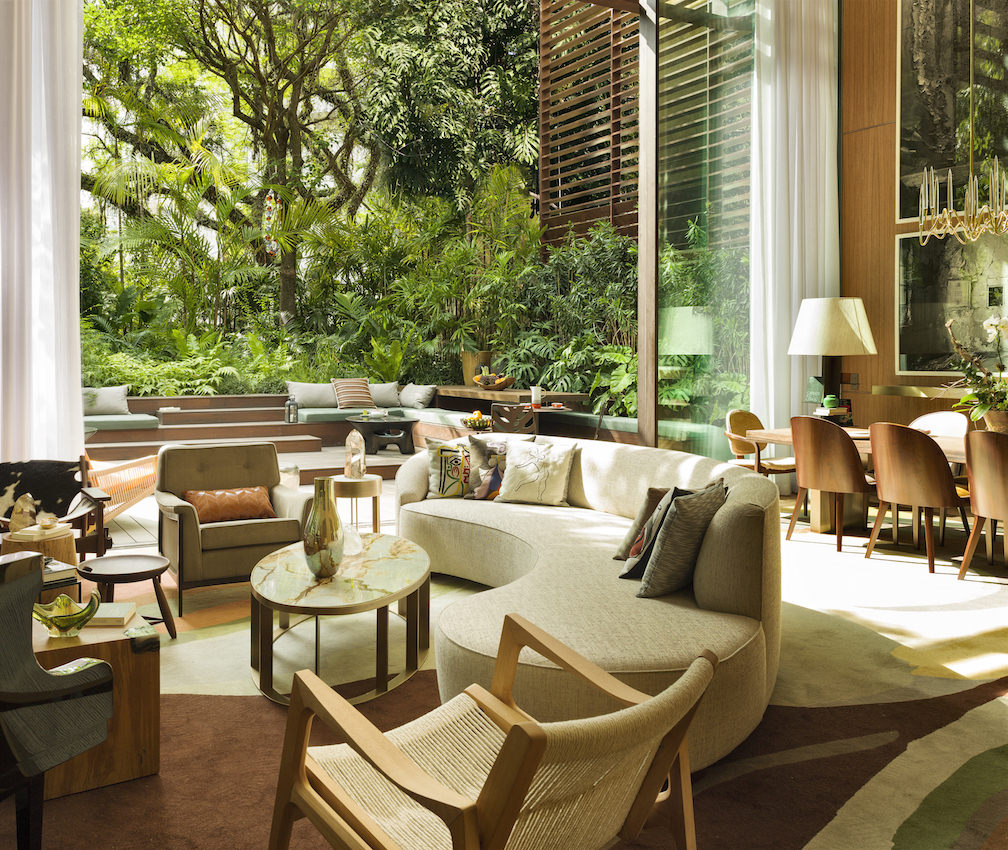 The Rosewood Tower, with interiors by Philippe Starck.
The Rosewood Tower, with interiors by Philippe Starck.
WW: In addition to small business initiatives, during your years in Saint Martin de France, you won some major school entrepreneurial competitions.
AA: My projects were always extremely pricey, so they typically couldn’t be executed. However, they were ambitious and so I usually won the school competitions. One day one of the guys who visited the competition saw my project and told me, “Come work for me.”
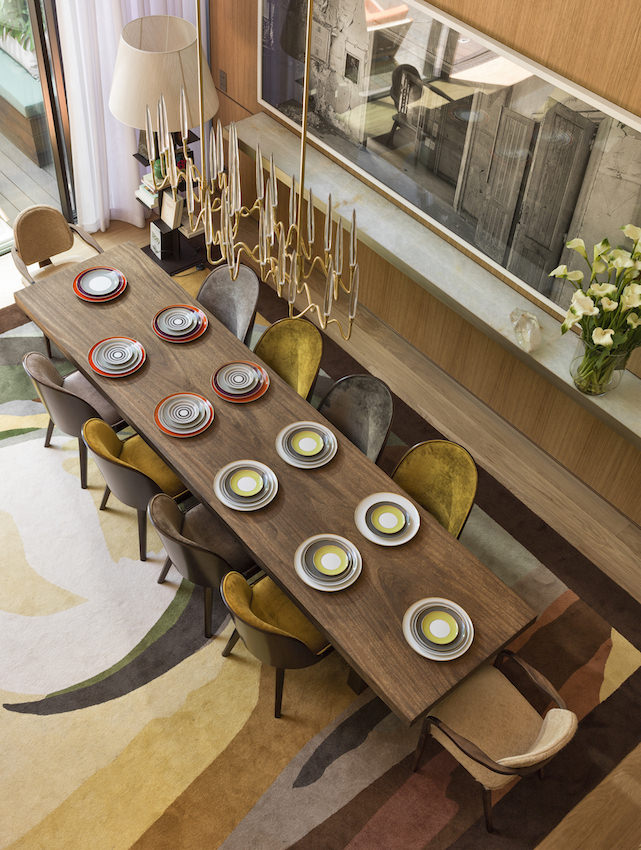 The Rosewood Tower, with interiors by Philippe Starck.
The Rosewood Tower, with interiors by Philippe Starck.
Shortly after I was sent to California to launch something they believed would never work. Americans used to buy a gallon of water for fifty cents. My challenge was to sell them a gallon of water for two dollars a bottle.
The deal with Evian was that I would sell cases and ensure that the bottles were prominently displayed; the idea being that consumers would be attracted to the bottle itself, as opposed to its contents. In America at the time, people didn’t pay for display spots; many supermarkets worked independently, so it was easier to secure these spots. I would go and see each and every supermarket and befriend the manager. Then I would convince him to buy Evian and to put it on display, the only way I knew that it would sell.
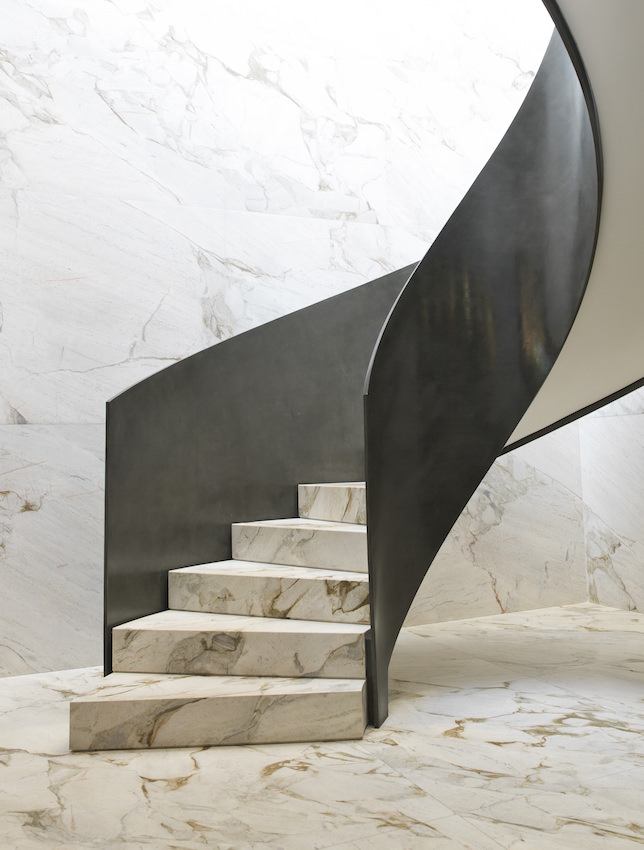 The Rosewood Tower, with interiors by Philippe Starck.
The Rosewood Tower, with interiors by Philippe Starck.
The payment for me was one dollar per case on display and after six months I sold 2,000 containers of 21,000 bottles each. I was making more money then the president of Evian worldwide. It was a good time to decide to go back to Paris.
WW: From America, you returned with a new Macintosh and a circle of bright friends you used to party with from Stanford University. They helped you establish a computer-assisted publishing company called Seaway Promer SARL. The company quickly provided technology to the most prominent advertising agencies.
AA: My cousin and I launched it in a former butcher’s shop in Puteaux near Paris, and everyone loved the location. All the advertising people enjoyed coming and smoking weed with us.
WW: In the early nineties, as individual marketing became more influential than advertising, you decided to exclusively focus your efforts on Consodata, a company you founded to create a mutualized database shared by all advertisers.
AA: The advertising companies always saw me as a geek, because they knew nothing about computers. Yet times were changing; companies started to evaluate costs and realized that there is a consumer beyond all these advertising films that cost them millions of dollars. So I started to store information about consumers, and while I was doing that, I realized that the future of advertising and marketing is one-to-one relationship.
WW: What do you mean?
AA: I made companies realize that they should care for their client. A client is like a friend. If he doesn’t care for you, he doesn’t know you; you are strangers. Relationship starts when you develop emotions. Then you have depth.
WW: How difficult is it to start something that didn’t exist?
AA: I’ve been doing this my entire life. There is no difference between what you envision in your head and what you can do, because once you put it in your head you already created an existence to it.
If it’s not new, it’s not new. If it is new, it is always crazy; it always breaks something that already exists. The minute you break something that exists you create a level of discomfort. Some people call this craziness.
WW: Did you ever step back because you were concerned that an idea was too foolish?
AA: I never stepped back. I fight until I completely lose, that’s for sure. I can lose everything that I have, but I will never step back.
When I decided to create this database about everybody, people said it was insane. Indeed, technically it was impossible because no computer was able to store it and no one knew how to create a system that collects info about people. Today we know that people love to share information—we have social media that proves it to us—but back then we didn’t. I had to convince the bank to give me a loan to create my first surveys, which took 45 minutes to complete, and the people in the bank laughed and said that no one would give me this information.
After seven months, I had collected data on one million households. After six years I had 580 million family households in my database.
The only way to make people believe in your idea is to execute it.
WW: After years of making money in a virtual world, you decided to shift to do things that are crafted. No more computers.
AA: I wanted to feel the beauty of what man’s hand can do. The more the world develops in a virtual and dematerialized way, the more we will have a need for physicality. I worked with the most advanced technologies and the most advanced people in the world—those that made the world what it is today—but it was like working for a ghost.
And this is something that took many years to realize. I remembered that as a child I was always making castles, and suddenly it hit me that I had never done what I wanted to do.
I reached a phase when I had so much money in my bank account that I started to lose perspective. I bought a Ferrari and then I bought an airplane, but it didn’t make me happier . . . It made me realize that this overflow of money was given to me in order to do something else. The idea of money usually is that it is a means to finance your dreams, but how big of a dream can one have when he has so much money?
WW: So what did you do next?
AA: So I circled back to my first big dream, which was to save the world. I was sure that I would be the one that would actually succeed in doing it, as opposed to all the others who had failed, but soon realized it’s not an easy task.
I started to finance a lot of initiatives and discovered the world of charities is one of the most horrible worlds. So many nonprofits lack a business model and are therefore unable to sustain themselves on a long-term basis. I spent millions of dollars learning this until I decided to create a business that is sustainable and will contribute to the world in a positive way.
WW: In 2010 you created Micro World, an Internet platform that allows individuals and businesses to make online loans to finance projects of micro-entrepreneurs around the world.
AA: I didn’t have patience for the old charity world, which, in my opinion, is based on vanity and the need for recognition. I think that simply giving money is disrespectful and irresponsible. When you lend money to somebody, you are establishing a business relationship, and you treat them as an equal. In Micro World we teach people how to sustain themselves.
WW: So why Brazil? None of your previous real estate refurbishment projects have taken place here.
AA: I first visited Brazil in 1992 and for the first time in my life I felt at home. I believe in past lives, and am confident that I had a past life in Brazil.
WW: So you fell in love with Brazil first?
AA: Yes, and in addition to that I had looked for a venue to create a physical portal because of my belief in physicality. A place for people to mix. I didn’t want it to be just a space where people pass by. I wanted it to be sexy, intelligent. I wanted people to get together but with a purpose. I want them to get elevated when they walk in the space.
São Paulo is the capital of the southern hemisphere. In 50 years, America, south and north, will be one country. If you project yourself with what is going to happen, it’s likely that the two biggest cities in the Americas will be São Paulo and New York, so the location of the Matarazzo was perfect for my vision also.
WW: How would you describe the Matarazzo project in one word?
AA: “Transformational,” which is also the reason why I am tired. I need to convince people that this project its possible, and so far I have received a 100 percent “it’s not going to happen” rate. Which is good because when this happens, I know I am doing the right thing.
WW: You say this at a time when Brazil is not doing so well.
AA: True, but forget about money; it can go up, it can go down. Money never made human beings. What made human beings is exchange, living together, creating together. To live through what is happening now in Brazil is a chance of a lifetime.
WW: So you are fully confident that this will succeed?
AA: Yes, it is and probably my last large-scale project, because after this nothing else will be interesting. It’s not real estate for me. I believe in physicality. I believe that this is the best way to live and remember what you lived. And when you will walk in the Matarazzo in a few years, you will live.
This article appears in Whitewall’s winter 2017 Luxury Issue.






